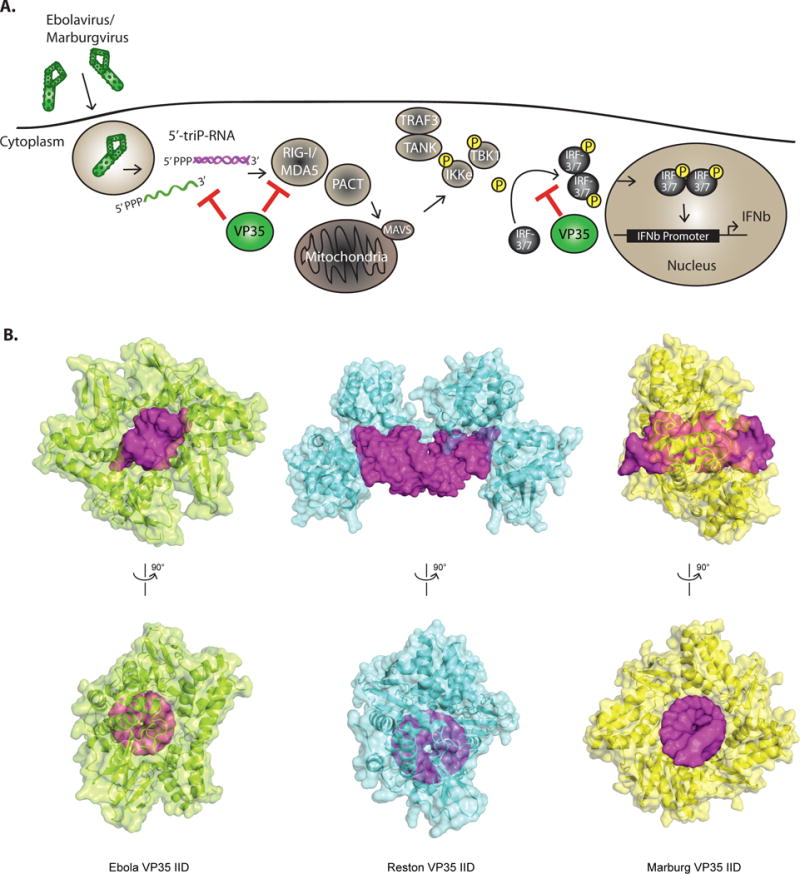Figure 2. Subversion of IFN induction.

A. Schematic of the IFN production pathway and mechanisms of filoviral evasion. The image depicts how EBOV VP35 (eVP35) and MARV VP35 (mVP35) proteins antagonize signaling pathways that lead to IFN-α/β gene expression. RIG-I-like receptors (RLRs) which include RIG-I and MDA5, detect products of viral replication, RNAs such as cytoplasmic dsRNAs or RNAs with 5′-triphosphates. Activation of RLRs is facilitated by the protein PACT. Upon activation, RLRs signal through the mitochondria-associated protein MAVS to activate kinases IKKε and TBK1. These phosphorylate interferon regulatory factor (IRF)-3 or 7 then accumulate in the nucleus and promote IFN-α/β gene expression. VP35 proteins can bind to dsRNAs and to PACT, preventing RLR activation. In addition, VP35s interact with and act as decoy substrates for the kinases IKKε and TBK1. B. Structural analysis of filoviral VP35 protein interferon inhibitory domain (IID) binding to dsRNAs reveals differences among the dsRNA recognition mode for EBOV, RESTV, and MARV VP35 proteins. (Left) The structure of eVP35 bound to 8 bp dsRNA (PDB 3L25). (Middle) rVP35 bound to 12bp (PDB 4LG2). (Right) mVP35 IID bound to 12 bp dsRNA (PDB 4GHL). dsRNA shown in magenta.
